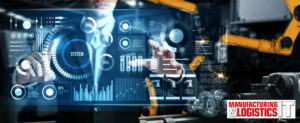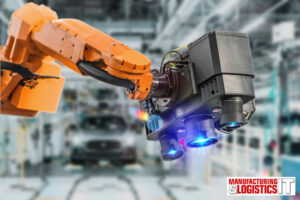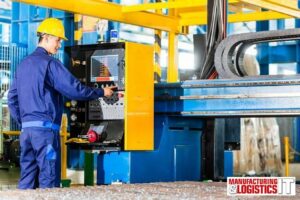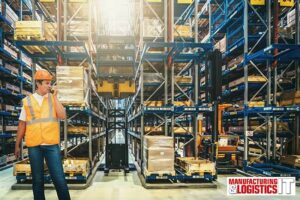By James Cavendish, freelance writer.
Thanks to technological advancements, freight forwarding warehouses can now take advantage of various highly effective security technologies. These allow them to minimize risks such as workers’ injuries, vandalism, theft, and fires.
When choosing the right security tech for their freight forwarding warehouses, businesses should opt for technologies and systems that are less likely to become obsolete quickly and can stand the test of time. Choosing these solutions is a practice known as future-proofing.
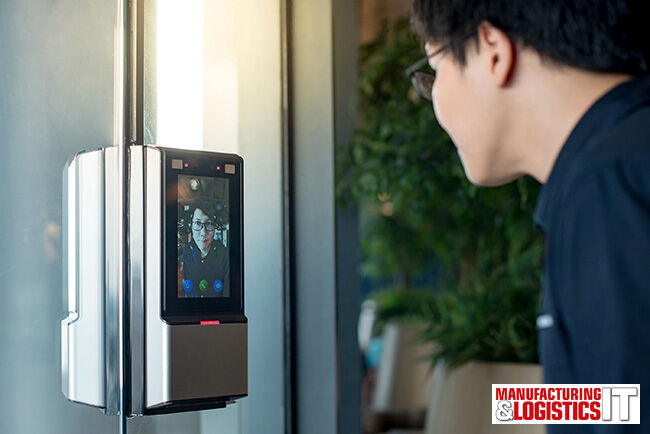
Implementing cutting-edge access control solutions
Access control measures ensure that only authorized staff can access the premises. Without them, your warehouse would be heavily exposed to the risk of ill-intentioned individuals, such as thieves or vandals.
While traditional access control solutions like key cards are still widely used, recent technological advancements have made it possible for businesses to implement far more sophisticated solutions. Some of the best examples are facial and voice recognition technologies. These technologies work by asking the individual attempting to gain access to scan their face or speak a specific phrase. This procedure makes it nearly impossible for intruders to gain access to the warehouse.
For particularly sensitive areas, businesses should consider implementing multi-factor authentication procedures (MFA), which require those requesting access to provide two or more credentials before being able to enter that specific space.
Infrared and thermal video cameras for added security
While traditional video cameras are certainly a helpful security feature of any warehouse, more advanced technologies can provide added safety.
Infrared cameras use infrared radiation to detect objects in the dark, making them ideal for monitoring warehouse activity at night without additional lighting, thus incurring higher energy costs.
Thermal imaging cameras can detect temperature differences between objects, allowing them to identify potential hazards such as fire and gas leaks. They are also more accurate than traditional monitoring methods, as they can detect even the slightest movements and changes in temperature.
Another advantage of using infrared and thermal cameras is their ability to detect hazardous materials or conditions that may not be visible to the naked eye. This helps reduce the risk of injuries and accidents due to unsafe work conditions.

Leveraging the power of AI with data analytics
Major progress in the field of artificial intelligence (AI) has had a significant impact on security systems. AI can collect large volumes of data from security cameras, access control solutions, motion sensors, and other technologies and analyze them to detect irregular patterns that may indicate potential threats.
For example, if an unrecognized individual is loitering around a restricted area of the warehouse, AI-powered data analytics would be able to detect it and alert security personnel in real time.
Data analytics tools can also help businesses identify weaknesses in their security systems or areas where they may need to invest more in order to reduce the risk of security breaches.
In order to get the most out of data analytics tools, there must be a high level of integration between your security technologies. Consulting the right commercial security integrator can help ensure your security solutions work harmoniously and provide you with the most comprehensive protection.
Using wellness verification software to boost your workers’ safety
The Coronavirus pandemic reminded us how vital it is for businesses to take all the necessary action to guarantee the safety of their workers. In addition to having their workers follow OSHA guidelines and specialized training to minimize the risk of accidents and injuries, organizations should consider using wellness verification software to improve the well-being of their warehouse workers.
This type of software helps you verify the health of your workers before they access the premises. It’s able to check for any underlying medical conditions or illnesses that may put workers at increased risk while on the job. For example, the software can detect signs of fatigue, dehydration, or other physical issues that could lead to unfortunate events on the job.
Wellness verification software can also be used to monitor employee behavior while on the job. It can track how long each staff member has been on shift and if they are taking appropriate breaks. These measures will help organizations ensure that workers are not overworking themselves and putting themselves at risk.
Shifting to a cloud-based and mobile-oriented security systems
Cloud-based technologies provide numerous advantages in comparison to on-premises ones.
First, they are more scalable, so businesses can start small and gradually add new security solutions as needed. Second, they offer better protection against cyberattacks, as the data is stored in secure cloud-based servers. Third, they generally require lower upfront costs and are often easier to maintain than in-house solutions.
Moreover, cloud-based technologies are mobile-friendly, so users can access and manage them from any device or location. This is especially helpful for warehouse operators, as it allows them to monitor their premises and ensure everything is running smoothly, even when they are not on the premises.
- SEO Powered Content & PR Distribution. Get Amplified Today.
- Platoblockchain. Web3 Metaverse Intelligence. Knowledge Amplified. Access Here.
- Source: https://www.logisticsit.com/articles/2023/03/20/the-security-tech-future-proofing-freight-forwarding-warehouses
- :is
- a
- ability
- Able
- access
- accidents
- accurate
- Action
- activity
- added
- addition
- Additional
- advanced
- advancements
- ADvantage
- advantages
- against
- AI
- AI-powered
- Alert
- All
- Allowing
- allows
- analytics
- analyze
- and
- appropriate
- ARE
- AREA
- areas
- around
- artificial
- artificial intelligence
- Artificial intelligence (AI)
- AS
- At
- attempting
- Authentication
- BE
- become
- before
- being
- BEST
- Better
- between
- boost
- breaches
- breaks
- businesses
- by
- cameras
- CAN
- Cards
- certainly
- Changes
- check
- choosing
- collect
- comparison
- comprehensive
- conditions
- Consider
- consulting
- control
- Coronavirus
- Coronavirus pandemic
- Costs
- could
- Credentials
- cutting-edge
- cyberattacks
- Dark
- data
- Data Analytics
- device
- differences
- each
- easier
- Effective
- Employee
- energy
- ensure
- Enter
- especially
- Even
- events
- everything
- example
- examples
- exposed
- eye
- Face
- facial
- fatigue
- Feature
- field
- Fire
- fires
- follow
- For
- freelance
- freight
- from
- Gain
- GAS
- generally
- get
- gradually
- guarantee
- Have
- having
- Health
- heavily
- help
- helpful
- helps
- High
- higher
- highly
- How
- HTTPS
- ideal
- identify
- Imaging
- Impact
- implement
- implementing
- impossible
- improve
- in
- increased
- indicate
- individual
- individuals
- integration
- Intelligence
- Invest
- issues
- IT
- Job
- jpg
- Key
- known
- large
- lead
- Leaks
- Level
- Lighting
- like
- likely
- location
- Long
- made
- maintain
- MAKES
- Making
- manage
- materials
- measures
- medical
- member
- methods
- MFA
- Monitor
- monitoring
- more
- most
- motion
- movements
- multi-factor authentication
- nearly
- necessary
- Need
- needed
- New
- night
- numerous
- objects
- obsolete
- of
- offer
- on
- operators
- order
- organizations
- Other
- pandemic
- particularly
- patterns
- Personnel
- physical
- plato
- Plato Data Intelligence
- PlatoData
- possible
- potential
- power
- practice
- procedures
- Progress
- protection
- provide
- put
- Putting
- quickly
- Radiation
- real
- real-time
- recent
- recognition
- reduce
- require
- restricted
- Risk
- risks
- running
- s
- Safety
- scalable
- scan
- Second
- secure
- security
- security breaches
- security systems
- sensitive
- sensors
- shift
- should
- significant
- Signs
- small
- smoothly
- So
- Software
- Solutions
- some
- sophisticated
- Space
- speak
- specialized
- specific
- Staff
- stand
- start
- Still
- stored
- such
- Systems
- Take
- taking
- tech
- technological
- Technologies
- test
- that
- The
- theft
- their
- Them
- themselves
- thermal
- These
- Third
- threats
- time
- to
- tools
- track
- traditional
- Training
- underlying
- unfortunate
- us
- use
- users
- various
- Verification
- verify
- Video
- visible
- vital
- Voice
- voice recognition
- volumes
- Warehouse
- Wellness
- which
- while
- widely
- will
- with
- without
- Work
- workers
- would
- writer
- Your
- zephyrnet

